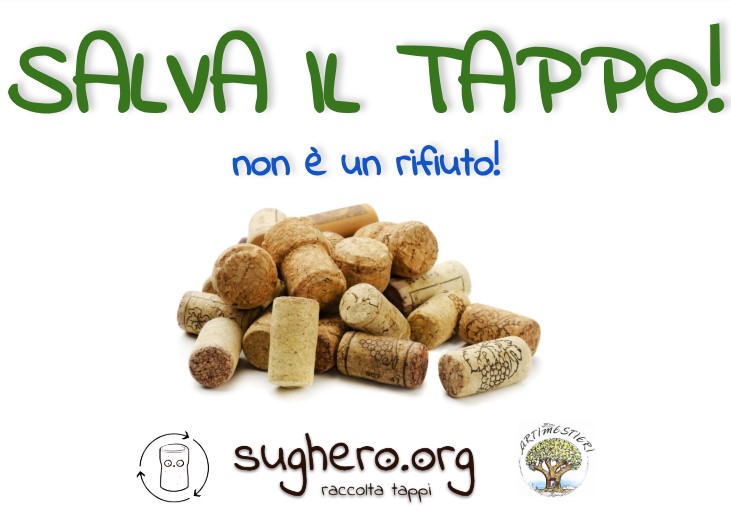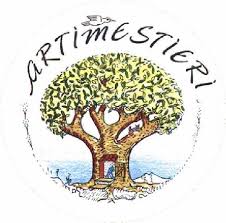“We propose a real 'Cap Hunt', designed especially for younger children, very precious animators for a real ecological transition” (Mauro Verra, President of Coop)
• Contribute to the correct collection and valorization of waste.
• Generate awareness about”Where does our waste go?“and try to ease the pressure on landfills in the future.
• “We would like Cuneo to become a visible and replicable model of a territory with a widespread and deep-rooted culture of attention to waste, to the maximum possible differentiation, and to the recovery and reuse of all the resources that can be made available to the community for the well-being of all” (from a 2018 interview).
Sughero.org is a project to valorize abandoned cork stoppers, a precious resource that does not deserve to become waste. The project involves the collection of the caps and their subsequent processing and reuse as thermal insulation in green building.
The process of collecting and upcycling the caps is managed by the Social Cooperative Artimestieri, who is primarily committed to “saving the corks” before they become waste, but is also able to receive caps from the separate collection of waste.
“Save the Cork”: how is the collection of corks structured?
1. Private collection of cork stoppers;
2. Collective collection of corks at “collection points”: there are almost 1500 of them distributed throughout Italy; schools, municipalities, aggregation centers, small and large associations, buying groups and fair-trade shops can become collection points for used corks, with the coordination of sughero.org. (www.sughero.org/becomes-point-of-collection/)
3. Conferral of caps to Artimestieri:
- direct delivery (for those who can easily reach the headquarters);
- delivery to intermediate HUBS: these are collection points that organize shipments of at least 250 kg of corks to the pallet offices.
The selected caps are paid 0.30 €/kg at the collection points and 0.50 €/kg at the HUBS. These proceeds are reinvested in social impact projects: for example, a school can purchase teaching materials, pay for educational trips to those in difficulty, eliminate architectural barriers; or an association can create awareness-raising events to combat discrimination and inequalities.
Upcycling: how does a cap become a new product for green building?
1. The received caps are selected and separated from the synthetic caps that were delivered by mistake.
2. They then pass through a mill at high temperature (90° C) to be sanitized and crumbled.
3. The granulate is used to thermally insulate homes with a breathable and healthy thermal coat. Recycled cork granulate is also used in sustainable clothing, organic furniture, acoustic treatment, anti-mold paints, colored plaster, thermal screed, thermal plaster, etc.
4. Research and development laboratories are working to always find new uses for cork, to replace plastic and other synthetic materials and to build together a healthier and more sustainable environment.
The reduction of CO2 emissions
The transport of corks to the Cooperativa Sociale Artimestieri, as well as the transport of cork granules to the houses it will insulate, causes the production of CO2, responsible for global warming. However, the collection and reuse of recycled corks is so good for the environment that it is reducing CO2 emissions of 400 tons every year.
How is that possible?
Our recovered cork is used for the breathable thermal insulation of homes, reducing heat loss and therefore fuel consumption by up to 90%. A study has calculated that even if only half of the recycled cork is used for thermal insulation, it reduces carbon dioxide emissions by 4 times its weight every year.
source: www.sughero.org








